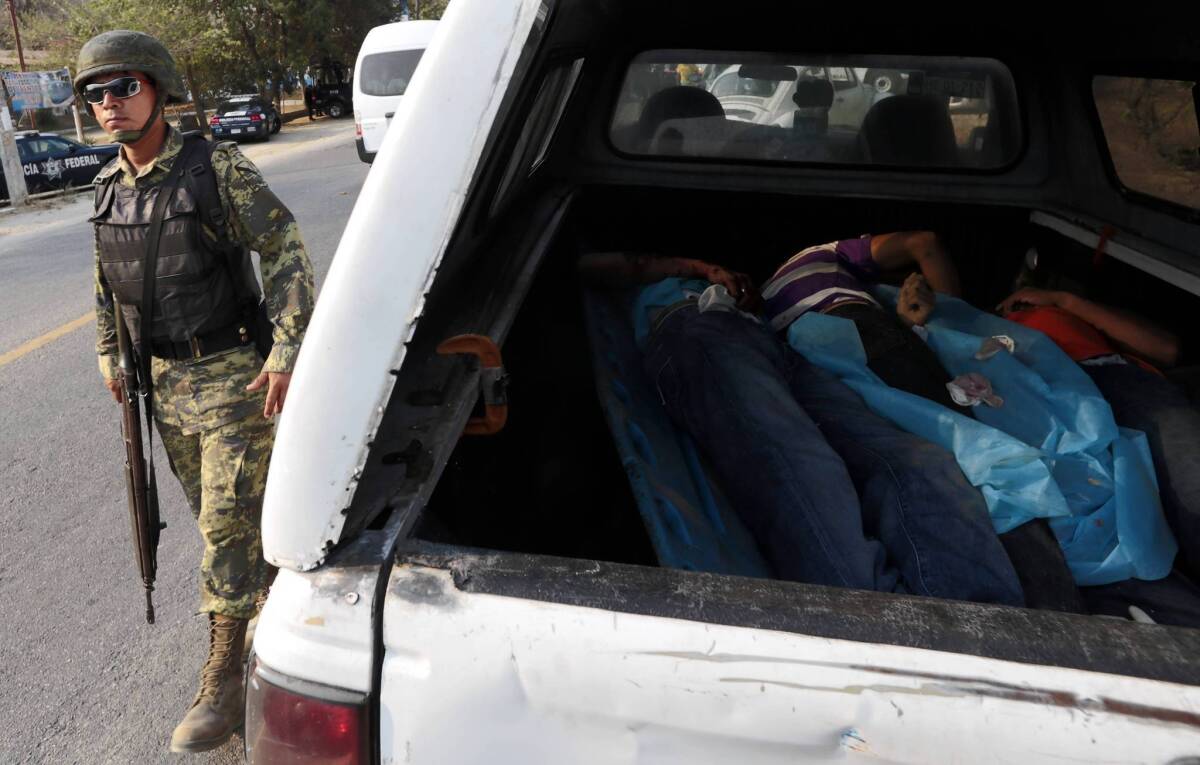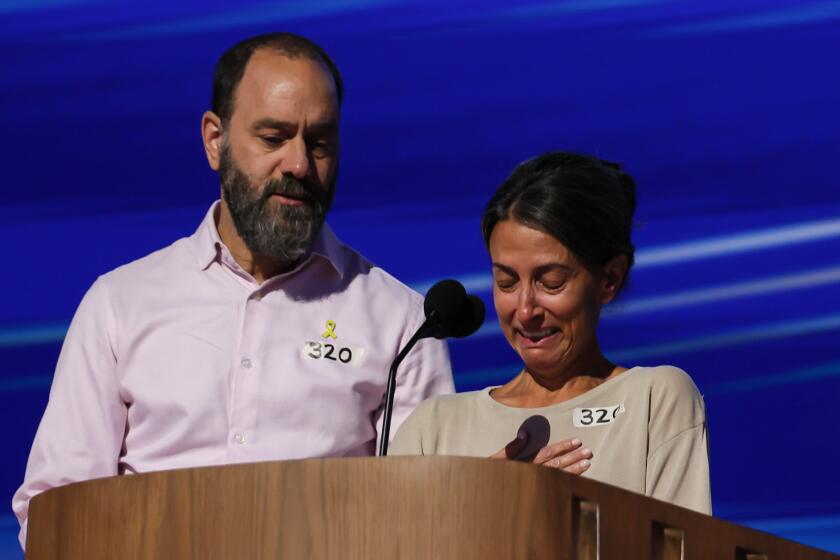Mexico creates task force to search for the missing

MEXICO CITY — Responding to anguished families and mothers on a hunger strike, the government of President Enrique Peña Nieto on Monday created an investigative task force to search for thousands of missing Mexicans.
The new effort comes as officials attempt to whittle down a list of more than 26,000 people who were reported missing — many seized by drug traffickers or by state security forces — during the previous six-year government of President Felipe Calderon.
“This will not be a forgotten issue,” Interior Minister Miguel Angel Osorio Chong said in assigning 12 investigators to the task force and setting up a single clearinghouse for missing persons reports.
Until now, families of the missing have had to go state to state, morgue to morgue, jail to jail, in search of vanished relatives, with little support from authorities.
“Having suffered the terrible drama of losing a loved one, [families] had to suffer the search ... the terrible challenge of the bureaucratic maze,” Atty. Gen. Jesus Murillo Karam said. “Today we want to destroy that bureaucratic maze.”
Osorio Chong, in a separate meeting with members of the foreign news media, said last week he is confident that once the cases are better documented, the number of “disappeared” will be substantially fewer than the 26,121 who are currently listed.
He said many people listed as missing had in fact migrated to the United States or left home after family disputes. He would not venture an estimate of how many fewer people will be included in the end.
The Calderon government came under scathing criticism from human rights groups for seeming to ignore the mounting number of people who went missing in recent years as authorities battled powerful drug cartels. Many were last seen being rounded up by police or the army. Others were snatched by drug trafficking networks, either to be pressed into slave labor in marijuana fields or meth labs or to be forced to serve as couriers and foot soldiers.
The list has been flawed from the start, experts say: Because authorities did not investigate, people who left home by choice were lumped in with those forcibly taken away, inflating the number.
Peña Nieto’s government acted on the missing issue after a group of mothers staged a nine-day sit-in and hunger strike outside the attorney general’s office building in Mexico City. At the end of Monday’s ceremony, some of the women shouted demands for justice and generally seemed unsatisfied with the creation of a task force.
The announcement was also met with some skepticism from human rights organizations.
“You can’t just search for these people. You also have to investigate what happened to them and who took them against their will, and bring those people to justice,” said Nik Steinberg, Mexico researcher for the New York-based Human Rights Watch and author of a major report on the disappeared that was released this year.
“We have seen no indication that they are working on the investigative part.”
The Peña Nieto government, nearly six months in office, is facing similar doubts in other areas, including the way it reports on homicides and arrests related to drug trafficking and organized crime.
In the meeting with foreign journalists, Osorio Chong said he expects that by the end of May, the overall toll of homicides related to drug trafficking and organized crime will have declined 20% compared with the same period last year. He said he thinks there will be roughly 2,000 fewer slayings.
But experts have called into question the methodology used in the government’s tallies and noted that the homicide rate began falling in 2011, long before Peña Nieto took office last Dec. 1.
“I think it’s intellectually indefensible to attribute that decline to the current policies,” said Alejandro Hope, a former analyst with Mexico’s equivalent of the CIA and now a researcher at the Mexico Institute for Competitiveness.
The government has also come under criticism for its refusal to release details about arrests of drug and organized crime suspects. In contrast to the previous administration, authorities now do not usually give the suspect’s nom de guerre nor the name of the cartel to which he or she belongs.
“We are not going to subscribe to their culture, nor will we be apologists for criminals,” said Eduardo Sanchez, chief government spokesman on security issues. He recently instructed officials across the country to refrain from releasing such details.
The government also discontinued the infamous “perp walks” that became common under Calderon. Handcuffed suspects, flanked by heavily armed, masked security agents, were routinely paraded before TV cameras and journalists within hours of their capture. Osorio Chong said such practice violated the suspects’ right to due process, which defense attorneys used to gain the release of the vast majority of more than 100,000 people arrested during the Calderon government.
Times staff writer Richard Fausset contributed to this report.
More to Read
Sign up for Essential California
The most important California stories and recommendations in your inbox every morning.
You may occasionally receive promotional content from the Los Angeles Times.











